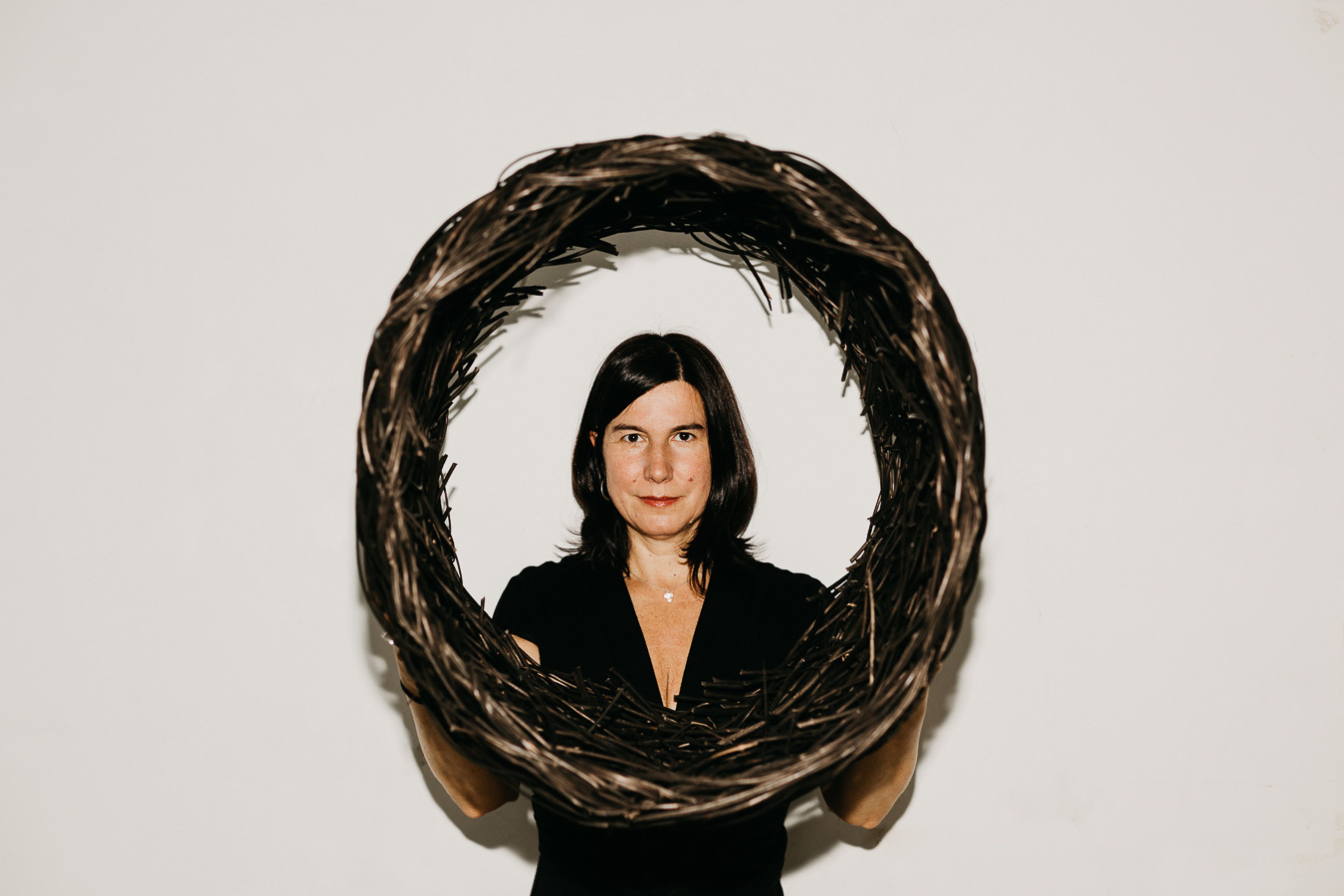
Latest information

Interview with the craftswoman Idoia Cuesta, National Craftsmanship Award winner
Idoia Cuesta embodies talent, quality and innovation in the Galician artisan sector. Born in the Basque Country and based in Lugo, the textile creator has masterfully combined tradition and experimentation to take basketry to new levels. Her work was recognised with the National Craftsmanship Award in the Product Category in the 2014 edition.
How does a biologist end up with a National Craftsmanship Award?
The truth is that I wanted to study Fine Arts, but at the time it was a little frowned upon so I decided to study Biology, which I do not regret at all because I still use the knowledge learned for the whole process of cultivation and classification of plant fibres, which I work and experiment with.
And the National Craftsmanship Award was the result of the research work done with my "Pandeira Collection", woven baskets with wool woven on a maple wood frame, and to have the fortune to win it.
Last year I also had the honour of winning the Galician Craftsmanship Award with the "Abisal collection", marine-inspired pieces woven with fishing line.
You opted for the Galician countryside to set up your workshop. What does this decision bring to the production process?
I am lucky to live in the middle of a Biosphere Reserve on the banks of the Miño River, surrounded by nature, which is always a source of inspiration for my collections. In fact, the "Nest" collection is inspired by how birds weave their nests with the grasses and fibres they collect.
In addition, living in the countryside allows me to grow my own wicker species, either native species such as Salix viminalis or brought from different parts of Europe, such as Salix triandra or Salix purpurea.
How do you manage to sell a product handmade in the Galician countryside in Japan?
Being able to market beyond our borders has been made possible thanks to the internationalisation programmes for attending international trade fairs in the sector such as Maison&Object in Paris, Formex in Stockholm, etc., carried out by the Artesanía Galicia Foundation. This allows us to create a portfolio of clients to be able to export to different parts of the world.
Social networks also allow us to communicate and create a brand concept to be able to sell our products globally at the local level.
There is a lot of tradition in your creations, but there is also innovation. How do you achieve this harmony?
I have always enjoyed experimenting and playing with materials, fusing and creating pieces by applying traditional weaving techniques to new materials, creating new shapes and volumes with different uses.
What are the results of applying innovation to your work?
The result of applying innovation to craftwork, both at the creative level and in terms of improving production processes to make them more competitive, gives rise to a new concept that we call Contemporary Craftsmanship. In fact, I have just returned from Valencia from participating as a speaker at the II Congress of Contemporary Craftwork, with some very interesting discussions laying the groundwork for the future.
What does it mean to be part of the Artesanía de Galicia brand?
It is an umbrella that encompasses many Galician artisan creators' brands, which allows us to participate in fairs and market our products with an endorsement of our image and quality.
You started making baskets, from there fashion accessories and now decorative elements and work in buildings, too. Is it part of an evolutionary process or do all the products coexist?
At the moment all the products coexist, but I am evolving and making more artistic pieces, such as installations in stores, and creating structures more focused on the world of interior design and ephemeral architecture.
In addition, this summer I discovered a new artistic facet by participating in a LandArt Festival, creating artwork in nature.
One of your works was related to the firm Loewe, what did it consist of?
Currently I am still working with the firm Loewe, in prototype development and production. One of the most exciting projects for me was the collaboration on the two projects for the Salone del Mobile in Milan, with the Baskets collection (2019) and the "Weave, Restore, Renew" project (2022).
You've done other collaborations on installations with renowned firms such as Zara Home or Adolfo Domínguez. What does the future hold for Idoia Cuesta's work?
The truth is that these two collaborations set a course to open new paths with other firms when it comes to executing larger projects of window dressing and decoration in interior and exterior spaces, such as the facade made last year for the store of the Lugo firm La Nena in Milan. Now in October I'm traveling to Dubai to create a wicker sculpture for the inauguration of the new La Nena store.